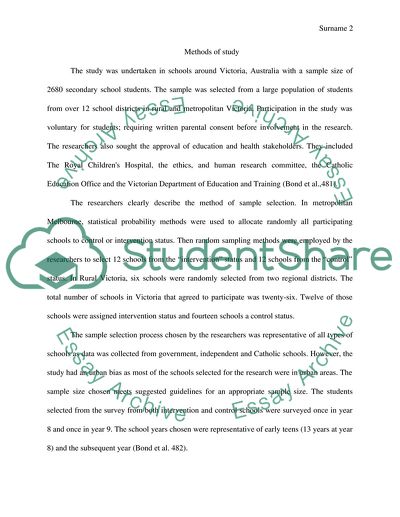Cite this document
(Does Bullying Cause Emotional Problems Article Example | Topics and Well Written Essays - 1500 words, n.d.)
Does Bullying Cause Emotional Problems Article Example | Topics and Well Written Essays - 1500 words. Retrieved from https://studentshare.org/social-science/1673436-to-write-a-critique-or-critical-review-of-a-scientific-paper-does-bullying-cause-emotional-problems-a-prospective-study-of-young-teenagers
Does Bullying Cause Emotional Problems Article Example | Topics and Well Written Essays - 1500 words. Retrieved from https://studentshare.org/social-science/1673436-to-write-a-critique-or-critical-review-of-a-scientific-paper-does-bullying-cause-emotional-problems-a-prospective-study-of-young-teenagers
(Does Bullying Cause Emotional Problems Article Example | Topics and Well Written Essays - 1500 Words)
Does Bullying Cause Emotional Problems Article Example | Topics and Well Written Essays - 1500 Words. https://studentshare.org/social-science/1673436-to-write-a-critique-or-critical-review-of-a-scientific-paper-does-bullying-cause-emotional-problems-a-prospective-study-of-young-teenagers.
Does Bullying Cause Emotional Problems Article Example | Topics and Well Written Essays - 1500 Words. https://studentshare.org/social-science/1673436-to-write-a-critique-or-critical-review-of-a-scientific-paper-does-bullying-cause-emotional-problems-a-prospective-study-of-young-teenagers.
“Does Bullying Cause Emotional Problems Article Example | Topics and Well Written Essays - 1500 Words”, n.d. https://studentshare.org/social-science/1673436-to-write-a-critique-or-critical-review-of-a-scientific-paper-does-bullying-cause-emotional-problems-a-prospective-study-of-young-teenagers.


